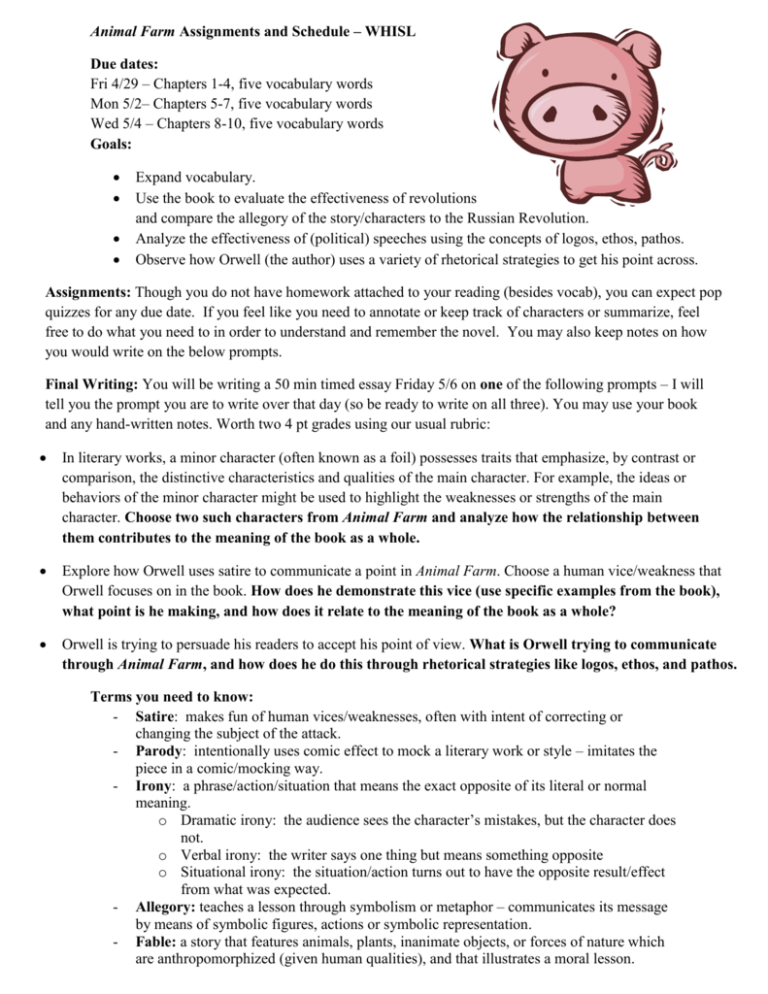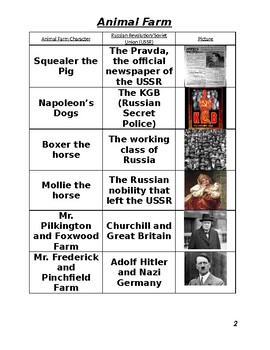Animal Farm, a novel by George Orwell, is a satire on the Russian Revolution, which took place in 1917. The novel is set on a farm called "Manor Farm," which is later renamed "Animal Farm." The story is told from the perspective of the farm animals, who are oppressed and exploited by their human owner, Mr. Jones. The animals are fed up with their treatment and, inspired by the ideas of a wise pig named Old Major, they rise up against their human oppressor and take control of the farm.
However, the novel is not just a simple allegory of the Russian Revolution. It also contains a number of symbols and allegories that represent different aspects of the revolution and its aftermath.
One of the most prominent symbols in the novel is the farm itself, which represents Russia. The animals' rebellion against Mr. Jones represents the overthrow of the Tsarist regime and the establishment of a communist government. The other animals on the farm represent different groups in Russian society, with the pigs representing the Communist Party and the other animals representing the working class.
Another important symbol in the novel is the windmill, which represents the industrialization of Russia. The animals on the farm initially see the windmill as a symbol of progress and a way to improve their lives. However, as the novel progresses, it becomes clear that the windmill is also a source of conflict and division among the animals. The pigs, who are the leaders of the farm, use the construction of the windmill as a way to gain more power and control over the other animals. This is a metaphor for the way that the Soviet government used industrialization and modernization as a way to solidify its own power, often at the expense of the working class.
The character of Napoleon, one of the pigs who becomes the leader of Animal Farm, is also a symbol. He represents Joseph Stalin, the leader of the Soviet Union. Like Stalin, Napoleon is a cunning and manipulative leader who uses propaganda and fear to control the other animals. He also becomes increasingly tyrannical as the novel goes on, ultimately becoming more interested in maintaining his own power than in working for the good of the farm.
Finally, the concept of "Animalism," which is the ideology that the animals on the farm follow, is a symbol of communism. Animalism is based on the idea that all animals are equal and should work together for the common good. However, as the novel progresses, it becomes clear that the pigs, who are the leaders of Animalism, are more interested in their own power and privilege than in creating a truly equal society. This is a metaphor for the way that communist regimes often betray the ideals of communism in practice, becoming dictatorships that oppress and exploit their own people.
In conclusion, Animal Farm is a novel that is rich in symbolism. The farm itself, the windmill, the character of Napoleon, and the concept of Animalism all represent different aspects of the Russian Revolution and its aftermath. Through these symbols, Orwell is able to satirize the events of the revolution and critique the way that communist regimes can betray the ideals of communism in practice.





